Review: unique, organic, and totally different, the Eowave Quadrantid Swarm offers a polyphonic, semi-modular hybrid Synthesizer package like no other.
Semi-modular synthesis is more popular than ever. Mainly because it offers musicians a simple and intuitive introduction to patchable synthesis, but without going into the deep. Arturia, Behringer, Moog, and others have made sure with their affordable patchable instruments that every musician, no matter what budget, can experiment with them.
The patchable concept does not necessarily have to be analog. Developers of digital and hybrid synthesizers have also discovered it for themselves. Today we’re looking at a hybrid, patchable poly Synthesizer from France. Eowave sent over the Quadrantid Swarm for review.
The feature set sounds very classic at first glance: two oscillators, dual filter, single LFO and envelope for modulation, a VCA, a spring reverb, and a sequencer. Nothing extraordinary. However, QS is very introverted when it comes to features. You have to explore it first to recognize its sonic specialties.
Interface
Let’s start with the most obvious, the interface. The format is Eurorack and you can choose between the module or standalone version (module + case). It consists of two areas: the sound and the touch-plate/sequencer. You get 22 knobs to tweak your sounds and 8 knobs plus two buttons to control the sequencer. There are also switches for the filter and envelope. On the bottom, you have 8 touch-sensitive plates for switching on/off steps on the sequencer or play the synth with up to 8 voice polyphony.
All control elements are in front of you, with no screen or deep menus. Except for the oscillators types where you need to work with the shift button. That makes the synth very immediate and hands-on, which is very positive. The design is an eye-catcher in every studio and live setup. It looks retro and futuristic at the same time. As if the designers had passed on their passion for steampunk into an instrument. A work of art for me.
Oscillators
Quadrantid Swarm offers two digital oscillators. The first consists of 8 newly developed algorithms, each of which can be controlled with two parameters. You can select them with the shift key and by pressing the respective step: organ, strings, drone, reed, metal, chiptune, grain, and noise. Some algorithms have a classic waveform core (8 sine VCOs, 8 saw VCOs), others offer more distinct concepts (8 granular generators, 8×2 VCOs the second is slightly detuned…).
They can act alone (one note, one VCO) or as a rich swarm of 8 oscillators. In mono mode, you can use the CV-controllable spread parameter to modify the frequency between the 8 VCOs. Character is a shape parameter that changes depending on the selected algorithm. It can be a wavefolder, distortion, modulation… Frequency modulation is also available via the dedicated CV input and attenuator.
Next to the character parameter, you can tweak the second sound generator, the percussive oscillator. The shaping possibilities are limited here to a single parameter. Thus the sound spectrum is not wide.
Organic Character
On the paper rather classic, but in practice, both oscillators have a very unique, organic sound. Without tweaking, they sound boring. If you shape them, they get a body and character. I especially enjoy those interim positions in the spread function when the oscillator starts to modulate/ aka swim. Some types are a bit noisier in the character and can sound very rough, industrial, and exciting weird. The grains mode is lovely and outputs very beautiful water-like sounds.
Surprisingly, the percussive oscillator fits nicely into the device. At first, I thought why you need it. It turned out that this brings some nice harmonics to the global sound. A nice contrast to the first and plus it’s a handy rhythmic element with the sequencer. All types have their own charm. They sound different and very organic in my opinion. Definitely not classic oscillators.
Mixer
The signal is then passed on to a 3-channel mixer in the middle. Here you can mix the VCO, the percussive unit, and also an external signal. By default input 3 is connected to the output of the reverb. The path is also breakable so that the external input becomes a feedback loop.
Dual Analog Filter
In the next step, the signal travels into two analog 12dB filters, connected in serial. Filter 1 offers lowpass & high pass, while filter 2 only has lowpass. Each filter includes cutoff & resonance controls, and modulation options with a dedicated attenuator. By default, the envelope modulates filter 1 and the LFO the filter 2. A bit of a shame, you can only control the cutoff here, not the resonance with CV. Both cutoffs stand out in the interface with VCS-3 similar knobs. There is a reason that the developer placed them so prominently.
Both filters have a big impact on how the Quadrantid Swarm sounds. They take something out of the rather cold digital oscillator sound, infuse warmth and strength to form the sonic body. You can hear that nicely if you add a little more resonance to them. In many synths, the filter is primarily there to filter sounds and not to color the signal too much. Here both filters enrich the signal in a nice way. Especially sonically rich are both filters in combination, one in highpass and another in lowpass mode.
One thing you have to know and pay attention to. The signal chain starts to produce feedback relatively quickly. This is recognizable by the red LED wave. It also applies to both filters. Thus, you can quickly drift into dirty, noisy timbres. For musicians with the drag for unpredictable, harsh sounds, perfect. Everyone else should be careful. If that’s not enough, you can re-configure the external input for additional feedback effects. Analog filters should have character, a musical timbre, and smooth. Both have all these attributes. For me, they are not filters in the classic sense but more unique, playable sound shapers.
VCA & Spring Reverb
From the filter it goes directly into a VCA with VCA input and CV sockets. A downer is the missing option to open and close the VCA manually. But there is a patchable workaround. Connect a constant positive voltage in the VCA input with which you can achieve that the VCA stays open. A simple knob would or an offset voltage would have been much more helpful here especially if you want to create drone with the Quadrantid Swarm.
It also lacks a headphone output because the small, compact format invites you to play with it on the couch and not always in the studio. At the end of the signal path, it also hosts an analog spring reverb with a built-in mini tank. It sounds quite good for its actual size and gives the timbres even more life and space. The spring reverb accepts external signals from the rev input socket and with higher volume, it also generates harsh feedbacks.
Modulation
The arrangement of the modulations is a bit wild. On the left but also on the right you can find some, like all functions in the QS. That is not very advantageous, but its compactness makes it straightforward to find all functions very quickly. There is little modulation, perhaps too little for my perception. You get an envelope with switchable AD (attack decay) or AR (attack release) characteristics as well as a multi-wave LFO with a dedicated knob.
By default, the filter cutoff and VCA use the envelope as a modulation source. The curve as well as the mod parts can be adjusted with an attenuator. QS is semi-modular thus you can break the envelope out and use it elsewhere as a modulator. The LFO is at the top right and has 8 settings, from classic to experimental, wild waveforms. The last position is cool. Here the LFO uses the derived sequencer signal as a modulator source. Pre-wired configuration yes, LFO to filter 2, but you can broken it easily thanks to its semi-modular architecture.
The whole thing becomes a bit more interesting with the built-in slew limiter. You can use it to smooth the incoming LFO or to add portamento to the pitch signal. LFO visualization with a glowing flower is a nice, catchy extra. Modulation turned out to be rather minimal but since the QS is a Eurorack module, it can easily be expanded with more sophisticated modulators.
Sequencer & MIDI
Let’s put it this way: the built-in sequencer is still in its infancy. It is very, very simple, can only run in one direction and has 8 steps. By pressing the touch-sensitive plates, you activate/deactivate the steps and the knobs above them sets the pitch. Very easy and hands-on. More sequencer functionalities would have been nice, especially other directions (random, backwards …).
If you want more freedom here, you can also sequence the Quadrantid Swarm externally. It has MIDI on TRS (adapter included), clock in/out, reset and CV/gate /trigger with which all sequencing doors open. Big plus is the MIDI CC implementation which you rarely have in Eurorack modules. It has MIDI CC for the oscillator section, LFO, and envelope which is a neat extra.
Sounds
Sonically, it takes you into strange, experimental soundscapes and timbres. It’s definitely not your partner in crime for bread and butter Synthesizer sounds. And not comparable to a Moog Mother-32 or so. It’s very unique to me. The timbres range from atmospheric, organic, up to wild, overdriven and dirty.
It may sound a little weird at first, but I guarantee it’s a lot more versatile than you think.And take your time to discover and try out the sound spectrum of the QS. Two hours are not enough, dear Padawans.
Drone Machine Or Ultimate Techno Machine or Both?
I have to admit, I initially pushed the Quadrantid Swarm primarily into the experimental side. With his very own character it perfectly fits in there. When Alex aka Mylar Melodies published his brilliant video, another came to light that I was less concerned with, the techno side.
And I agree with him. The minimal 8-step sequencer and his somewhat organic, dirty character fits perfectly for quick techno jams. The sequencer takes care of the hypnotic, monotonous melodic elements, the analog filters, on the other hand, adds deep, rich, analog growling to it.
Techno or experimental drone box? In my opinion, both can be done with it.
Eowave Quadrantid Swarm Review
It took a long time to develop, but it was worth the wait. Whether the interface design, feature set, or sound character, Quandratid Swarm is utterly unique. It’s a true standalone synth without having dishonest synth brothers and sisters from the past. Eowave goes its own way with the QS and that is what makes it so special and popular right now.
The design is a pearl on the shelf and in use. In both situations an eye-catcher like no other synth voice, for me. It is also hands-on and does not require a long time to get used to. It’s a lot of fun to experiment with it. In terms of sound, it’s hard to compare to another modern synth. It can sound harmonic-rich, organic but also wild and dirty. A small, wild beast with a lot of character. One of the most organic sound generators I’ve ever experimented with.
As distinctive as it sounds, the Quadrantid Swarm is not 100% perfect. Jamming around on the couch is only possible to a limited extent, as a headphone jack is missing. Either play in mono, which is annoying in the long run, or always have an interface with you where you can pick up the stereo signal. Your decision. Then designing these lovely, bizarre drones/textures is not optimally solved either. That’s because there is no built-in drone mode or one-knob VCA opener.
And more modulation would also be nice. But since it is completely Eurorack compatible, you can quickly infuse new mod signals from a module system if necessary. Nonetheless, the QS remains one of the experimental synthesizers highlights in recent years. Organic, rich, wild, and unpredictable, that’s the Quadrantid Swarm by Eowave.
Pro
- steampunk design
- both desktop and Eurorack synth
- 8 unique algorithms
- rich-sounding analog filters
- organic timbres
- analog spring reverb
Neutral
- more CV connectivity
Negative
- missing headphone jack
- no drone mode or an option to open the VCA more easily
- simple sequencer
Eowave Quadrantid Swarm is available now as a desktop synth for $639 USD/539€ or as a Eurorack module without a case for $569 USD/489€
More information here: Eowave
Support the Eowave Quadrantid Swarm review via our partner

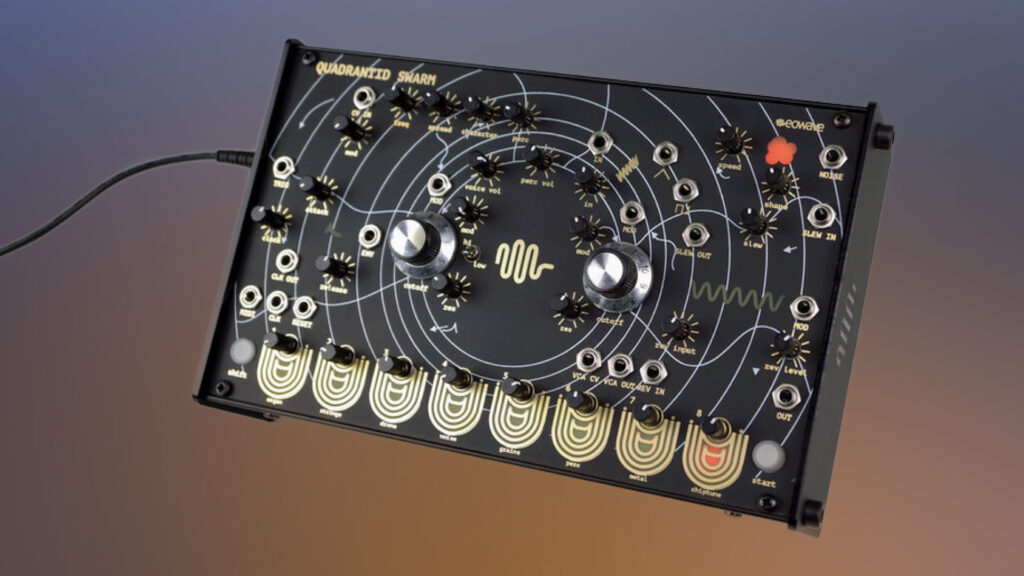
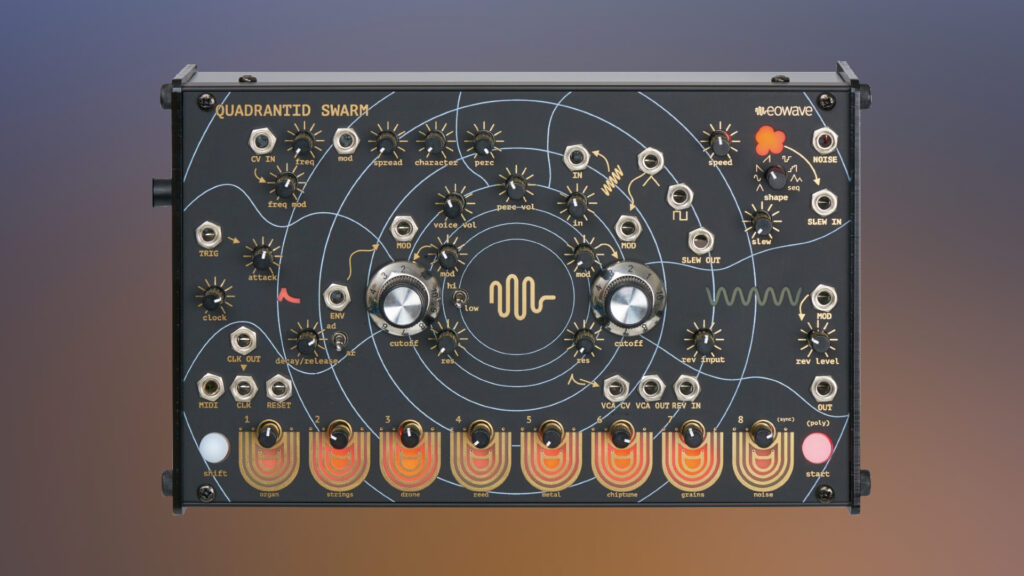
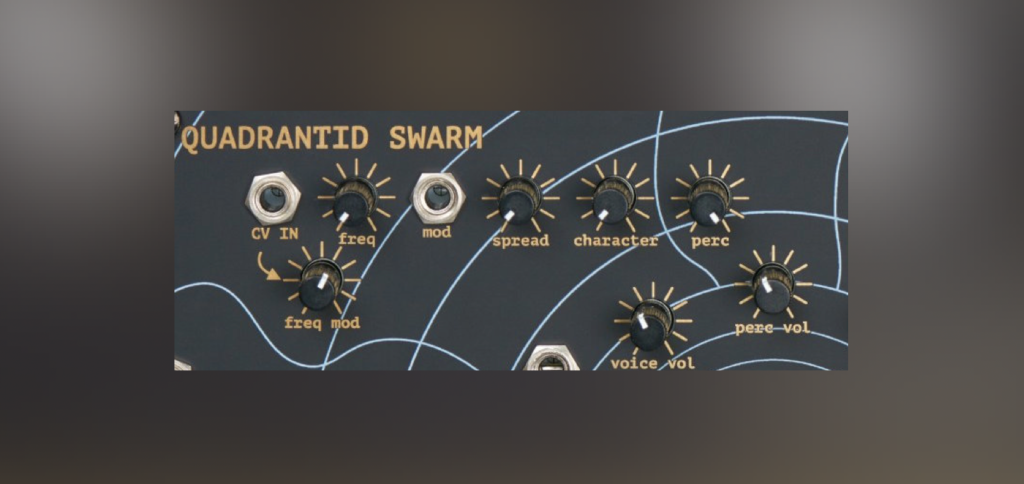
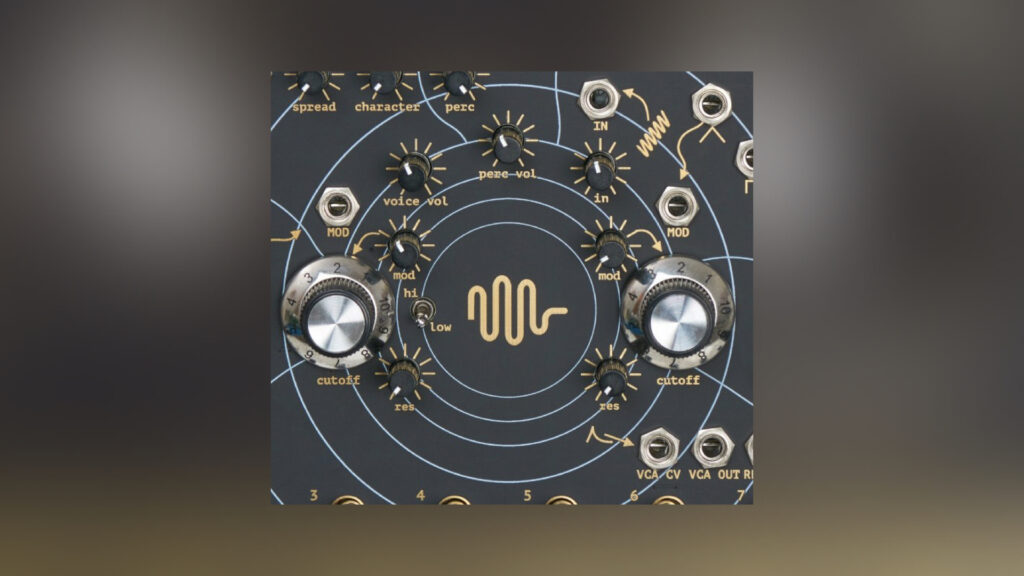
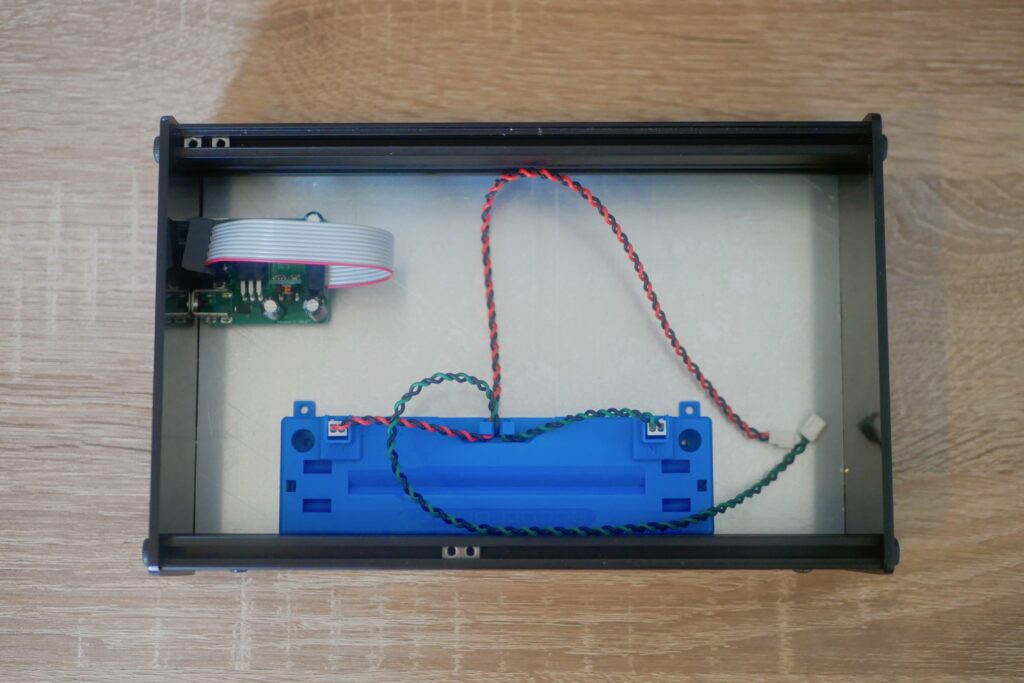

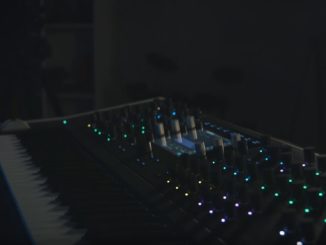
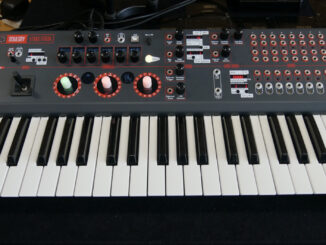
I backed this on Kickstarter a few years back. It was my second foray into semimodular I think after Plankton Electronic Ants! Anyway, I love this synth… I find myself constantly learning new tricks with it and those filters and Spring Reverb sound so darn good….
Been trying to get one for ages, but it’s always sold out everywhere.
I hope it comes back in stock someday on perfect circuit.